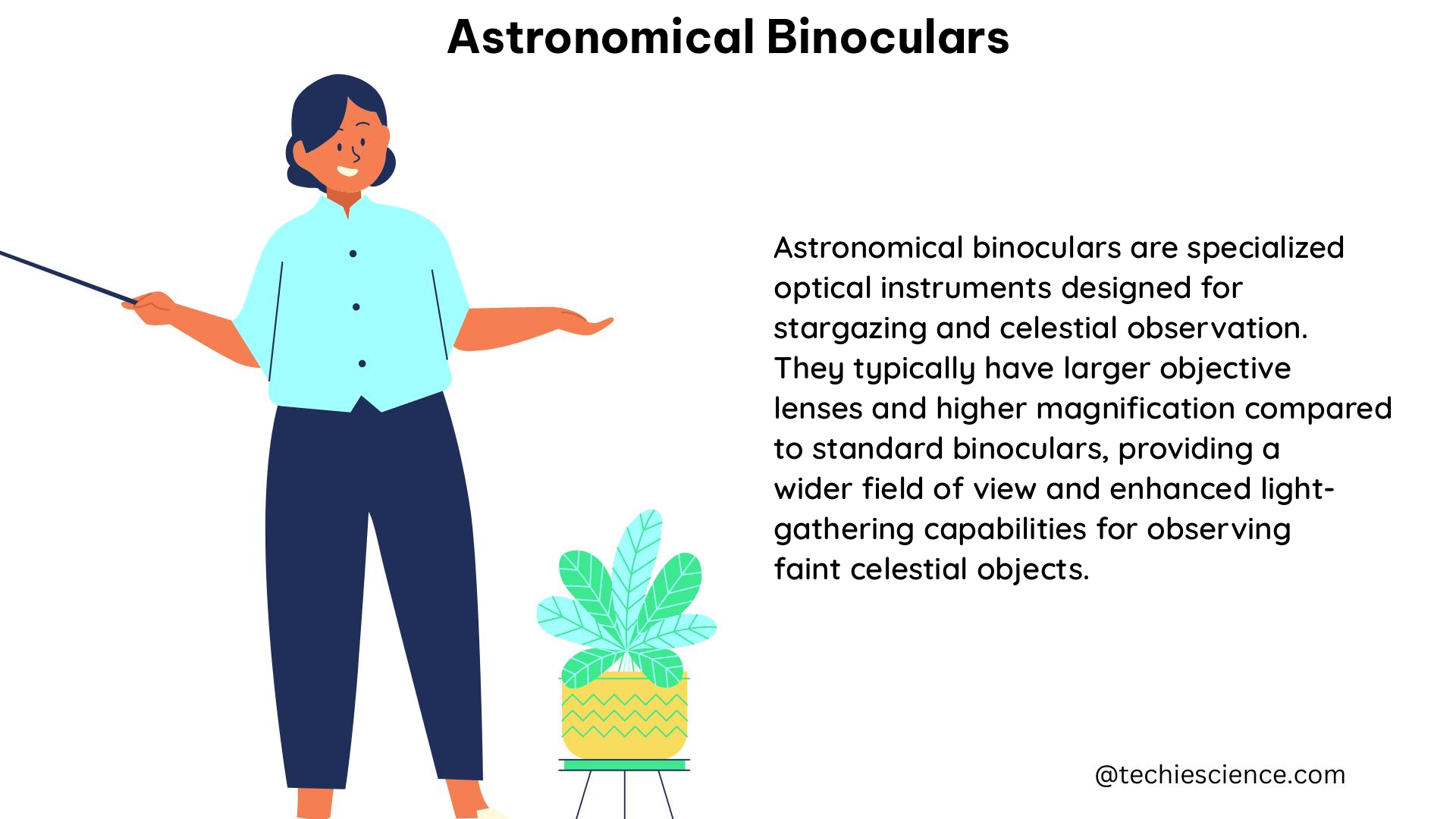Astronomical binoculars are a versatile and cost-effective tool for stargazing, offering a unique perspective on the night sky. These instruments combine the convenience of binoculars with the power of telescopic observation, allowing users to explore the celestial wonders with ease. In this comprehensive guide, we will delve into the physics behind astronomical binoculars, exploring the key technical specifications and their implications for observing the cosmos.
Magnification and Objective Lens Diameter
The magnification power of astronomical binoculars is a crucial specification, typically expressed as a ratio, such as 10×50, where the first number represents the magnification and the second number represents the objective lens diameter in millimeters. Higher magnification allows for closer views of celestial objects, but it also narrows the field of view and can make the image shakier, especially when using handheld binoculars.
The objective lens diameter is another critical factor, as it determines the amount of light the binoculars can gather. A larger objective lens gathers more light, resulting in brighter and clearer images. However, larger objective lenses also increase the size and weight of the binoculars, making them more challenging to handle and transport.
Exit Pupil and Field of View

The exit pupil is the diameter of the beam of light exiting the eyepiece of the binoculars. It is calculated by dividing the objective lens diameter by the magnification power. A larger exit pupil results in a brighter image, making it easier to see faint celestial objects. However, the human eye can only dilate to a certain size, typically around 7mm, so exit pupils larger than this are not beneficial.
The field of view is the width of the area visible through the binoculars, typically expressed in degrees or as the width of the view at a distance of 1000 yards. A wider field of view allows for easier tracking of moving objects, such as planets and asteroids, and provides a more immersive observing experience.
Angular Resolution and Diffraction Limit
The angular resolution is the ability of the binoculars to distinguish two nearby points as separate objects. It is limited by the wavelength of light and the diameter of the objective lens. The angular resolution can be calculated using the Rayleigh criterion, which states that the minimum angular separation between two points is approximately 1.22λ/D, where λ is the wavelength of light and D is the diameter of the objective lens.
The diffraction limit is the limit of resolution imposed by the wave nature of light. It is determined by the wavelength of light and the diameter of the objective lens. The diffraction limit can be calculated using the Airy disk formula, which states that the diameter of the Airy disk, the central bright spot in the diffraction pattern, is approximately 2.44λ/D.
Magnification Limit
The magnification limit is the maximum magnification power that can be achieved without losing image quality. It is determined by the diameter of the objective lens and the exit pupil. The magnification limit can be calculated using the formula M = D/d, where M is the magnification power, D is the diameter of the objective lens, and d is the diameter of the exit pupil.
Physics Examples and Numerical Problems
Example 1: Angular Resolution
Calculate the angular resolution of a pair of 10×50 astronomical binoculars for observing stars in the visible light spectrum (λ = 550nm).
Solution: Using the Rayleigh criterion, the angular resolution is approximately 1.22λ/D = 1.22(550nm)/(50mm) = 1.32 arcseconds.
Example 2: Diffraction Limit
Calculate the diffraction limit of a pair of 10×50 astronomical binoculars.
Solution: Using the Airy disk formula, the diameter of the Airy disk is approximately 2.44λ/D = 2.44(550nm)/(50mm) = 2.7 arcseconds.
Example 3: Magnification Limit
Calculate the magnification limit of a pair of 10×50 astronomical binoculars with an exit pupil diameter of 5mm.
Solution: Using the formula M = D/d, the magnification limit is M = (50mm)/(5mm) = 10x.
By understanding the physics behind astronomical binoculars, users can make informed decisions when selecting the right instrument for their observing needs. Whether you’re a beginner stargazer or an experienced astronomer, this guide provides a solid foundation for exploring the wonders of the night sky with the help of these versatile and powerful instruments.
References
- Binoculars for Astronomy and Stargazing: Part 2 – B&H Photo
- Astro- Chp. 5: Telescopes Flashcards | Quizlet
- Binocular Astronomy – Brightness & Magnitude – Best Binoculars Reviews
- Binocular Stargazing Catalog – Sky & Telescope
- Limiting Magnitude Charts and Tables – Binoculars – Cloudy Nights

The lambdageeks.com Core SME Team is a group of experienced subject matter experts from diverse scientific and technical fields including Physics, Chemistry, Technology,Electronics & Electrical Engineering, Automotive, Mechanical Engineering. Our team collaborates to create high-quality, well-researched articles on a wide range of science and technology topics for the lambdageeks.com website.
All Our Senior SME are having more than 7 Years of experience in the respective fields . They are either Working Industry Professionals or assocaited With different Universities. Refer Our Authors Page to get to know About our Core SMEs.